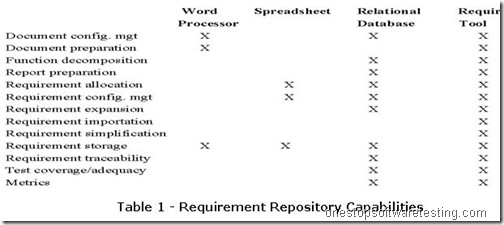Requirements Reliability Metrics:
The business requirements are the foundation upon which the entire system is built and this specifies the functionality that must be developed in the final delivered software. And that requirement verification and validation is needed to assure that the functionality representing the requirements has indeed been delivered. However, often the requirements are not satisfied, leading to a process of fixing what you can and accepting the fact that certain functionality will not be there. The better approach is to get the requirements right the first time, complete, concise and clear, that will provide the developer a clear picture to build the system with out any misunderstanding between the Business Analyst, Developer, Quality Assurance team and the client.
The requirement reliability metric is based on the requirement specification and keeps track of the requirements-in scope of the project.
Requirement Specification:
The importance of correctly documenting requirements has caused the software industry to produce a significant number of aids to the creation and management of the requirements specification documents and individual specifications statements.
Requirement Management:
Considering the size and complexity of development efforts, the use of requirements management tools has become essential. Tools also provide capabilities far beyond those obtained from text-based maintenance and processing of requirements. Requirements management tools are sophisticated and complex – since the nature of the material for which they are responsible is finely detailed, time-sensitive, highly internally dependent, and can be continuously changing.
There are many requirement management tools to choose from. These ranges from simple word processors, to spreadsheets, to relational databases, to tools designed specifically for the management of requirements such as DOORS (Quality Systems & Software – Mt. Arlington, NJ) or RTM Requirements Traceability Management (Integrated Chipware, Inc. – Reston, VA). The key to selecting the appropriate tool is the functionality (See Table 1 for a comparison of tool capabilities) provided and the capability to develop metrics from the data, secondary contained in the tool.

The metric capability of the tool is important. It should be noted that most of the metrics presented in this paper to demonstrate how to do requirements the right way were developed from the data contained in a requirement management tool. Table 2 shows a comparison of the metric capability associated with the different tools. Clearly the relational database and requirements management tool provide the capabilities needed to effectively support the management of requirements.



Recent Comments